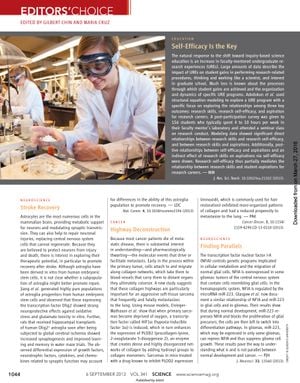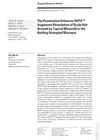Finding Parallels: Scientific Discoveries in Neuroprotection, Research Self-Efficacy, Metastasis Inhibition, Tumor Suppression, Membrane Channel Regulation, Nanoscale Deformation, and Frequency Shift Detection
September 2013
in “
Science
”

TLDR Human stem cells can aid stroke recovery, research experiences boost students' career aspirations, minoxidil may reduce cancer spread, a molecule can slow tumor growth, a protein affects water flow in cells, magnesium behaves differently at tiny scales, and a new method detects slow-moving objects.
The document discusses several scientific findings. Jiang et al. found that astroglia progenitors derived from human embryonic stem cells, particularly those expressing Olig2, have neuroprotective effects and can improve recovery after stroke in rats, as evidenced by increased synaptogenesis and improved learning and memory. Adedokun et al. explored the impact of undergraduate research experiences (UREs) on students, revealing that research skills improve research self-efficacy and aspirations for research careers, with self-efficacy partially mediating the relationship between skills and aspirations. Eisinger-Mathason et al. demonstrated that inhibiting PLOD2 expression with minoxidil in mice reduces the metastasis of sarcomas to the lungs by affecting collagen networks. Glasgow et al. showed that in gliomas, miR-223 can suppress tumor growth by repressing NFIA, which is overexpressed in some gliomas. Reichow et al. studied how calmodulin regulates membrane channels, finding that it restricts the dynamics of aquaporin monomers, affecting water permeability. Yu et al. investigated the deformation behavior of magnesium at the nanoscale, finding that below 100 nm, there is increased activation of nonbasal planes, leading to plastic deformation. Lastly, Bortolozzo et al. developed a method to detect tiny frequency shifts associated with slow-moving objects using a slow light medium.
